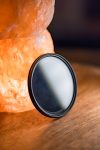Neutral Density Filters: A Photographer’s Guide to ND Filters
What is an Neutral Density filter?

A neutral density filter, or ND filter, is a filter that reduces the amount of light entering the camera lens. This allows photographers to use slower shutter speeds and wider apertures in bright conditions without overexposing the image. ND filters are available in a variety of densities, from reducing light by a small amount (2 stops) to a large amount (10 stops or more).
Why use an ND filter?
There are many reasons to use an ND filter, including:
- Smoothing out moving water, such as waterfalls or rivers
- Creating long exposure effects, such as light trails or blurred clouds
- Keeping the background in focus while using a shallow depth of field
- Photographing sunrises and sunsets without blowing out the sky
Types of ND filters
There are two main types of ND filters:
- Standard ND filters: These filters reduce the amount of light entering the camera lens evenly across the entire image. They are available in a variety of densities.
- Graduated ND filters: These filters are darker on one side than the other. This allows photographers to reduce the brightness in a part of the image, but not all of it. They are particularly useful for high-contrast scenes with a lot of light in the sky.
How to choose an ND filter
The type of ND filter you choose will depend on your needs. If you are primarily interested in smoothing out moving water, a standard ND filter is a good option. If you are interested in creating long exposure effects or photographing sunrises and sunsets, a graduated ND filter is a better choice.
The density of the ND filter you choose will also depend on your needs. If you are only shooting in bright sunlight, you may only need a 2-stop or 3-stop ND filter. If you are shooting in very bright conditions, you may need a 10-stop or 16-stop ND filter.
How to use an ND filter
To use an ND filter, simply screw it onto the front of your camera lens. Make sure that the filter is the same size as the thread on your lens. Once the filter is attached, you can adjust your camera settings to use a slower shutter speed or wider aperture.

Tips for using Neutral Density filters
- Experiment with different ND filter densities to find the one that works best for you.
- Be careful not to overexpose the image, even when using an ND filter.
- Use a tripod to avoid camera shake when using slow shutter speeds.
- ND filters can be used with other filters, such as polarizing filters or color filters.
Neutral density filters are a versatile and essential tool for any photographer. With a little practice, you can use ND filters to create stunning and creative images.
I hope this article was helpful. Please let me know if you have any other questions.
